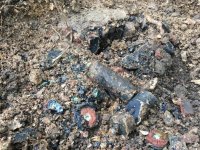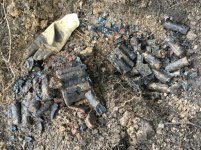When my family visited my grandfather, probably sometime around 1938 to maybe 1943, I remember him listening to a radio which was powered by a battery that was probabl6 about the size of what you found. He had a rented farm way out in the sticks before REA brought power in.
Jim
They normally took 3 to 5 batteries, not just the one.
G'Dads was an Atwater-Kent in a large and lovely veneered wood case. I only remember him 'investing' in batteries and powering-it up but the one time in my youth. Probably to listen to the Stevenson-Eisenhower election results, as he was a life-long Democrat, but had never been overly fond of Roosevelt, and even less of Truman.
It was kept-on as a nice bit of furniture long after we finally got mains electricity in 1953. Batteries cells by that time didn't look any different than an array of 'peeled' D-cells for the lower-voltage high-current filament heaters. Higher voltage, lower-current grid units resembled the stacked guts of our present-day 9-volters. The plate power battery was off-limits for kids of my then-age to mess with.
I had an older cousin who got into some of the damndest situations with those, though!

HS friend of Dad's with a similar sense of humour was bored running the family Texaco Station. Put a speaker under the top-plate of their two-holer Lady's privy, big-old carbon microphone in the shack.
Spirit moved him, and a women would go into the privy, he'd wait just a minute or so, key the mic, cough, say,
"Uhh M'am? Would you mind using the other hole? We're trying to work down here!"













